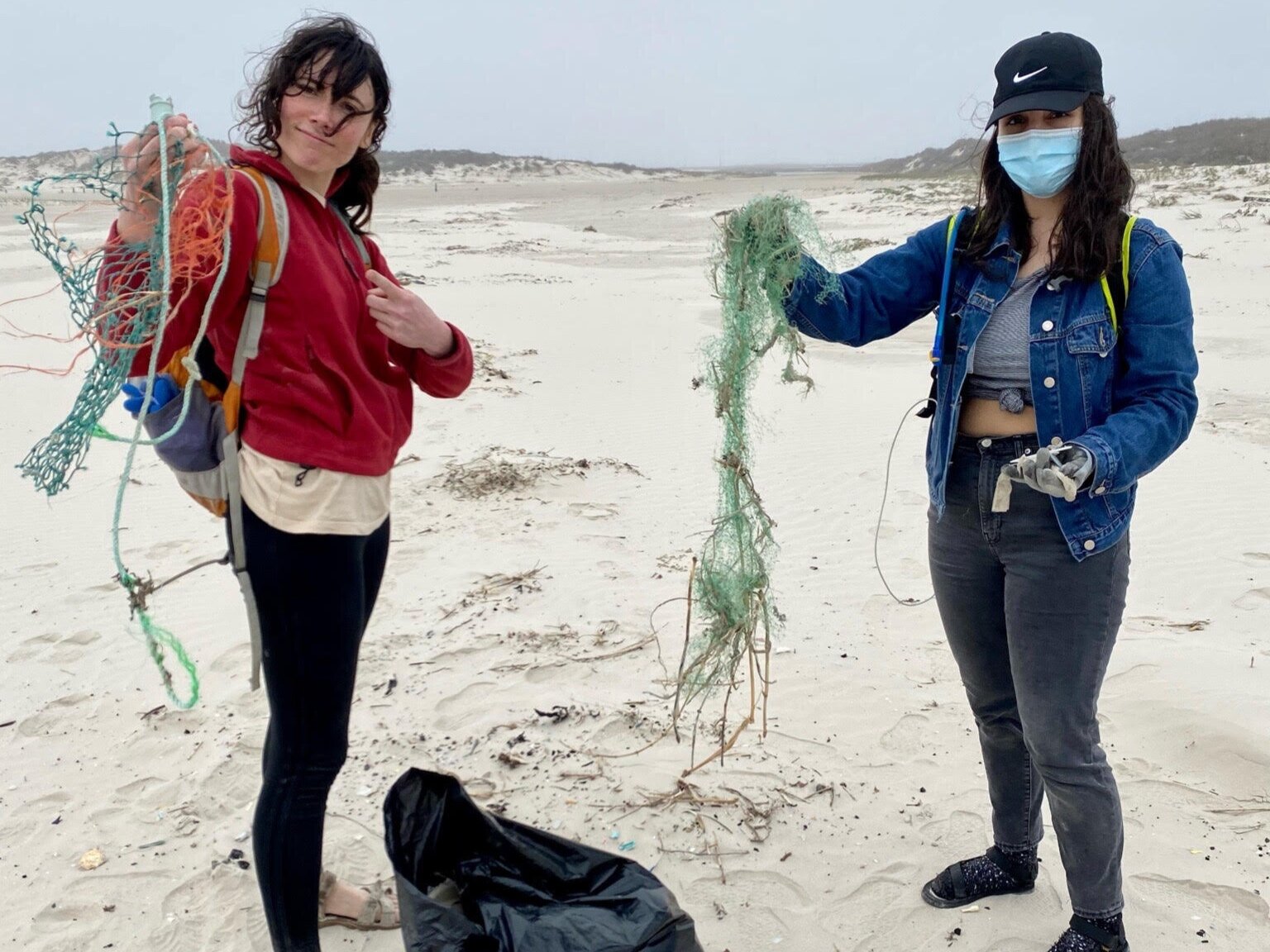Less trash means less plastic
The CoffeeSock gals cleaning our adopted beach on the Texas Gulf Coast.
Since the 1960s, we’ve used more and more plastics. And while we may attempt to recycle it, plastics end up in landfills, forests, beaches, and oceans. Despite recycling, we toss more plastics now than ever before.
Modern life seems to demand that we produce trash. After all, if you’re not growing all of your own food, you are probably purchasing it in some form of packaging. And some of that packaging is not reusable or recyclable.
It’s not you—it’s U.S.
If you want to buy bread, even the highest quality you can find at the local market, the packaging is almost always plastic. Same goes for bags of pasta, dried beans, and even vegetables. And in the world of online pandemic shopping, plastic is nearly impossible to avoid.
So, even if you compost and recycle, you’re probably still filling up a trash can. And a lot of that waste is plastic.
But you shouldn’t feel guilty if the pace of modern life—and your finances—mean you don’t have the time or money to buy reusable veggie bags, shop from bulk aisles and farmer’s markets, and scrutinize every package of every purchase.
Most plastics come from manufacturing and industries that make parts for cars, planes, buildings, and machinery.
We can collectively reuse, recycle, and pay attention to our plastic waste—but we also need the government to step in. From local plastic bag bans to national environmental standards, individual action is important, but collective action is key.
Wait. Isn’t plastic recyclable?
Surprisingly, not really. According to the Environmental Protection Agency, plastics made up 18 percent of the trash found in landfills in 2018. And while that’s not the majority of our trash—it is the majority of non recyclable trash.
The EPA’s data shows that less than 10 percent of plastic gets recycled, though we make more and more of it each year. In 1960, the US produced 390,000 tons of plastic and recycled virtually none. By 2018, we produced 91 times that much, recycling only 8.6 percent.
And here’s another important caveat—even when we do recycle, we can’t keep recycling. According to NPR, “Here's the basic problem: All used plastic can be turned into new things, but picking it up, sorting it out and melting it down is expensive. Plastic also degrades each time it is reused, meaning it can't be reused more than once or twice.”
Unfortunately, most of the plastic we think we’re recycling ends up in landfills and waterways.
What collective action looks like
We’re getting better and better at individual actions that make our planet clear and safer. Communities have sprung up around using less, reusing more, and choosing organic, sustainable, and trash-free alternatives when we can.
As the pandemic took hold, we also saw bigger, larger, and more vocal movements around collective action and community care.
For a world with less trash—we need both. So keep taking action in your day to day life to reduce trash. But consider these ideas for collective action too. But this isn’t all on you. It’s on the whole US.
Call or write the stores you shop. From your local grocery to Amazon, if you want to know their policy on single-use plastics—just ask. And them ask them to consider changes to reduce the amount of waste they contribute.
Call or write policymakers. At the local level, as for limits on single-use plastics, including plastic bags, cups, and straws. At the state and national level, ask policymakers to find ways to reduce the harms of plastic. NatGeo has a great primer on which states have plastic bans—and which don’t allow such bans.
Donate to or volunteer with environmental organizations. From neighborhood cleanups to large scale movements like The Sunrise Movement, support the groups who are working for change.
What to share this information, but make it entertaining? Check out Rollie Williams over at Climate Town.

